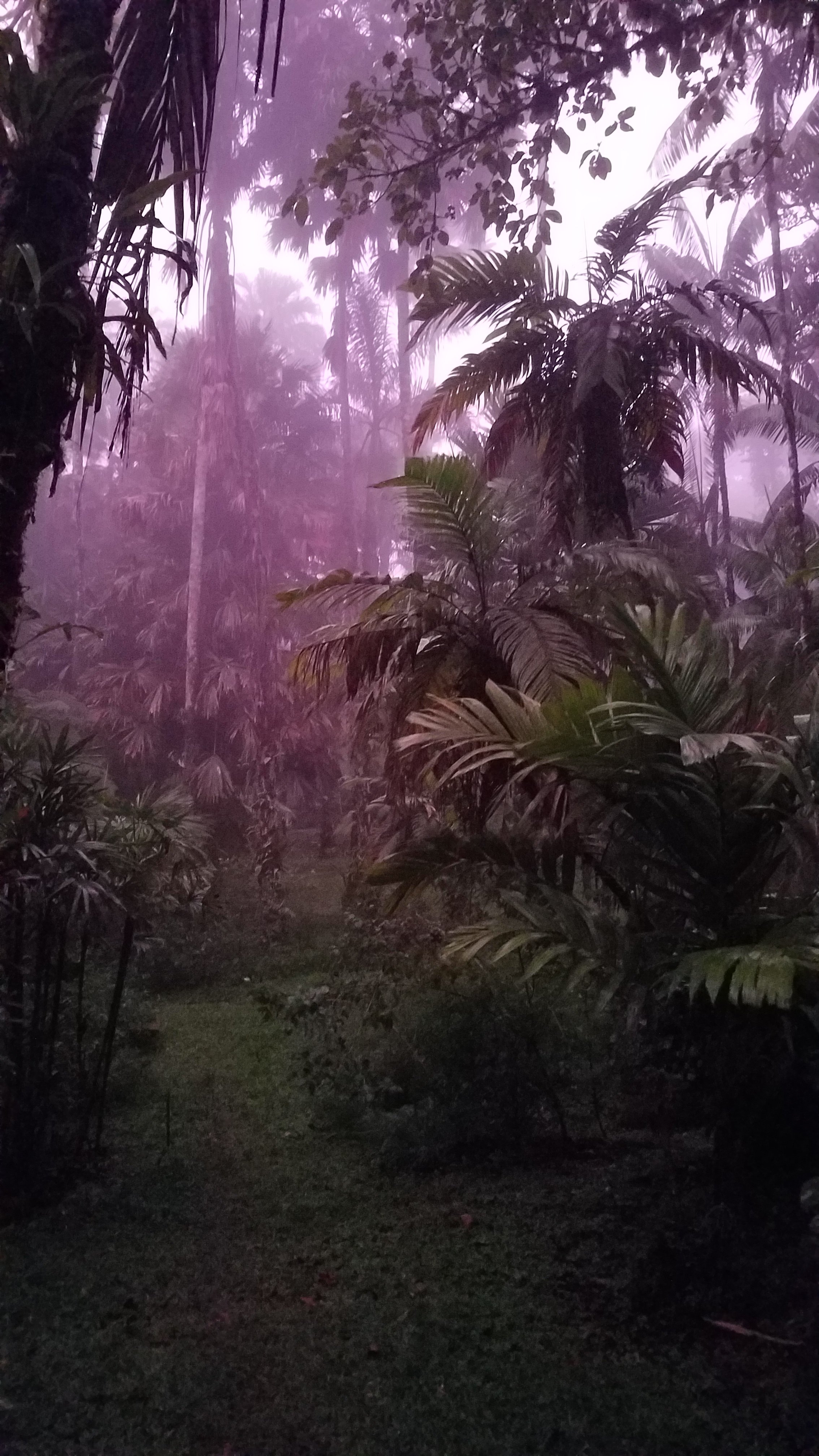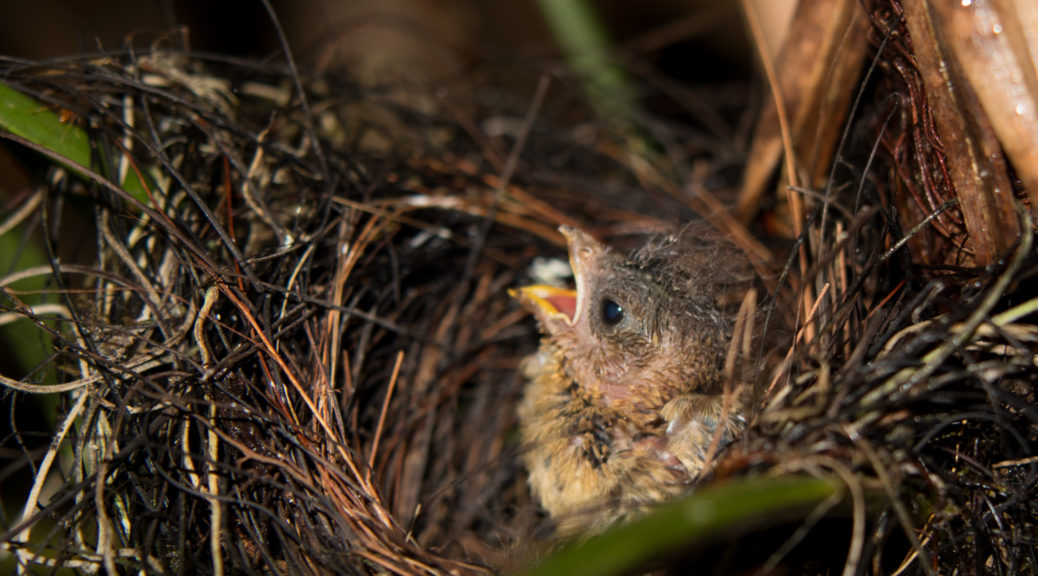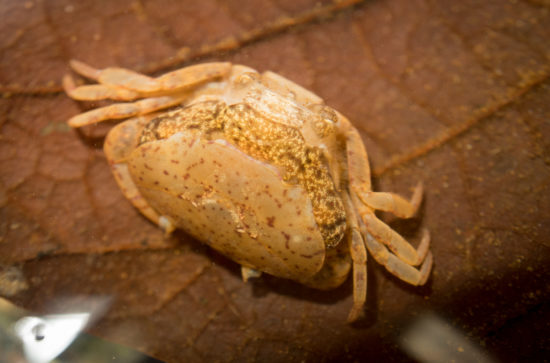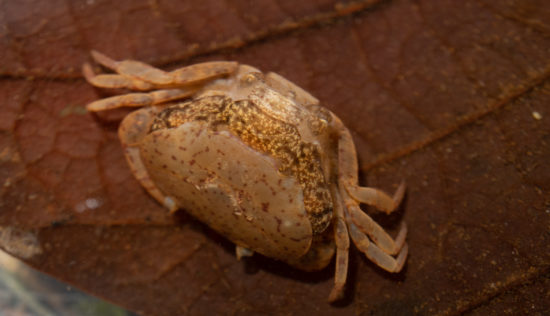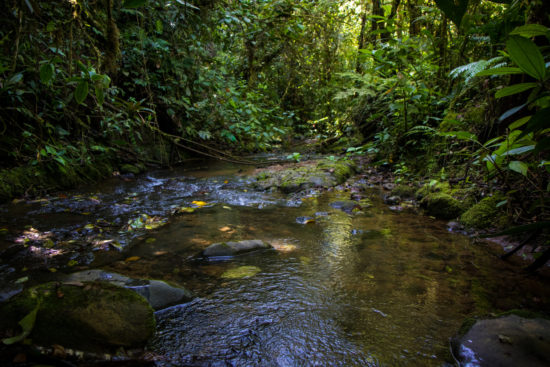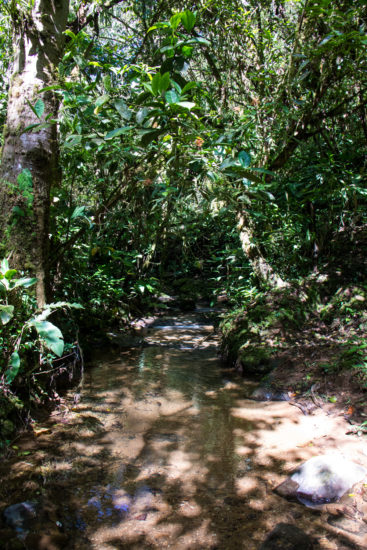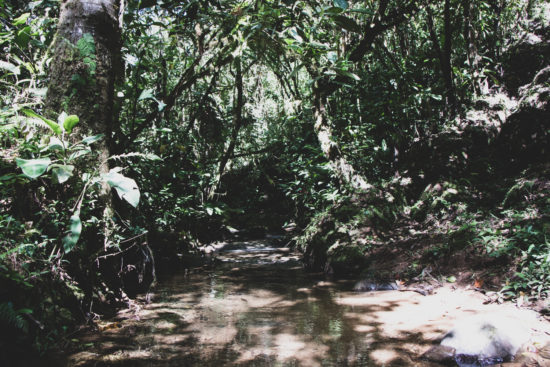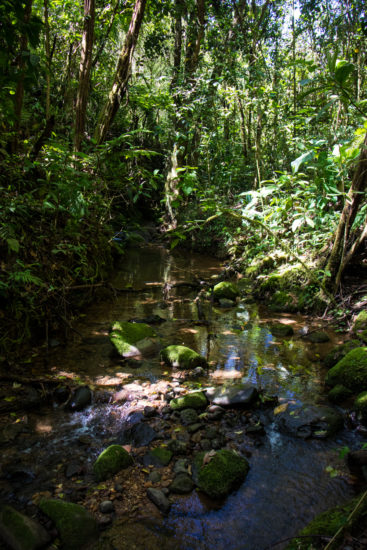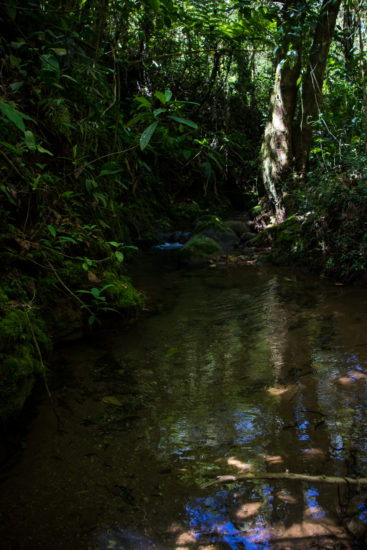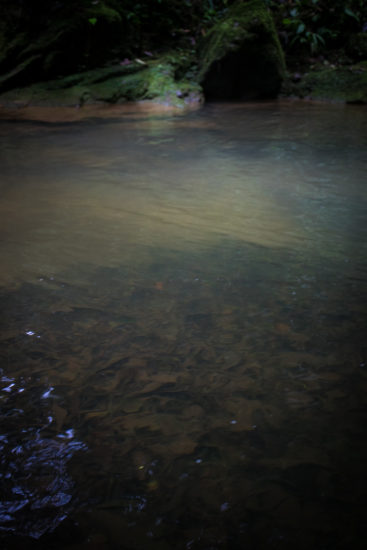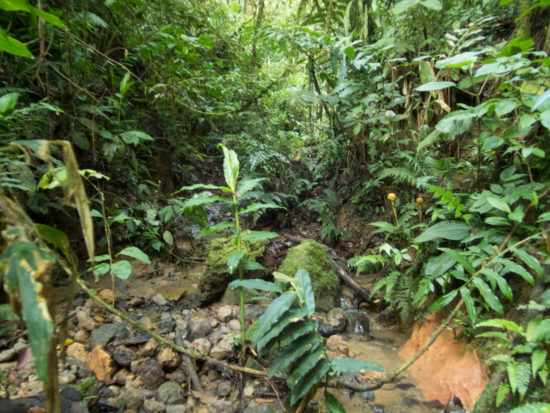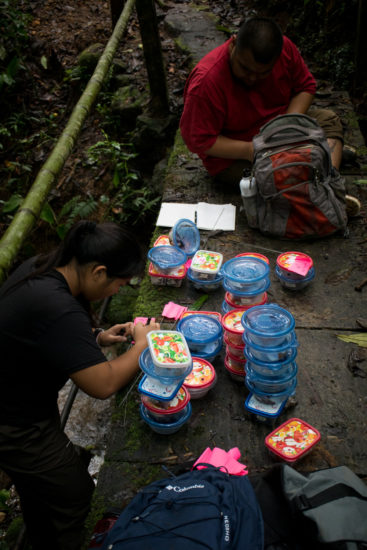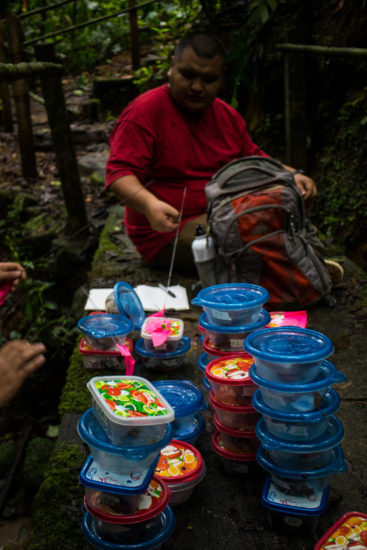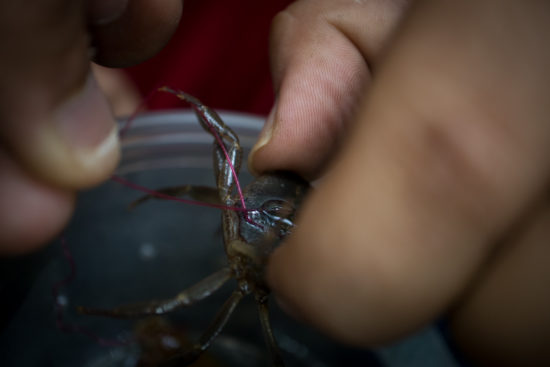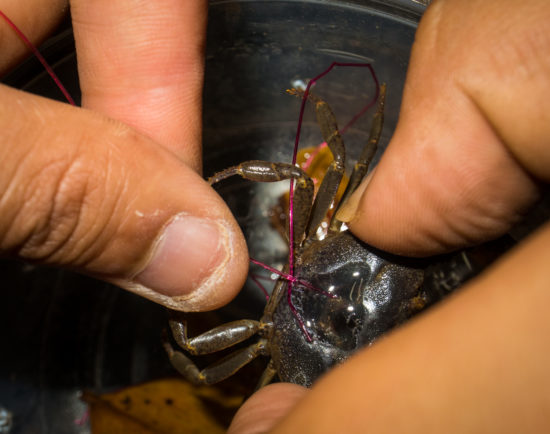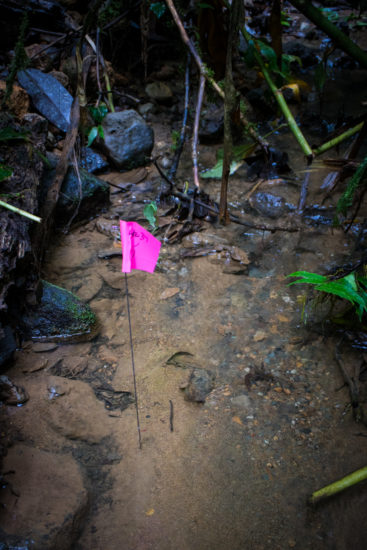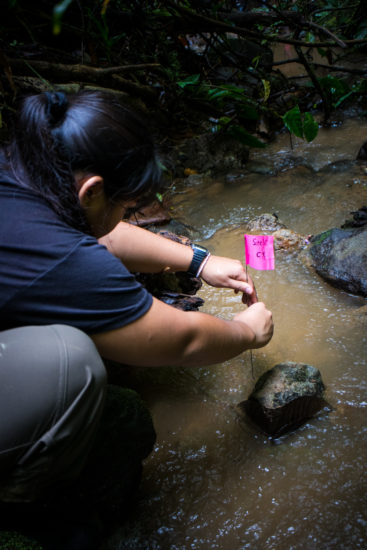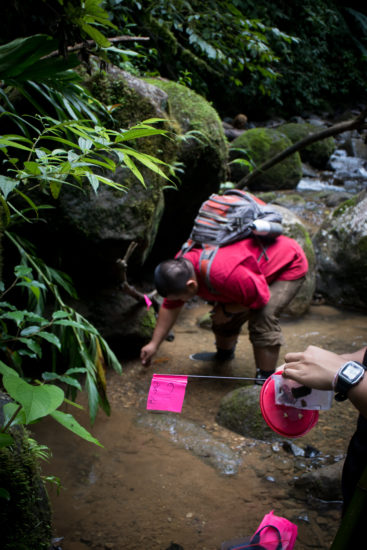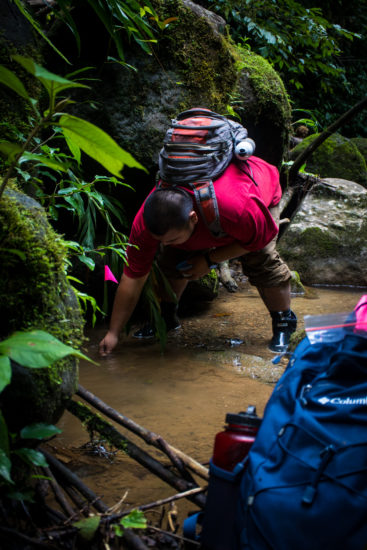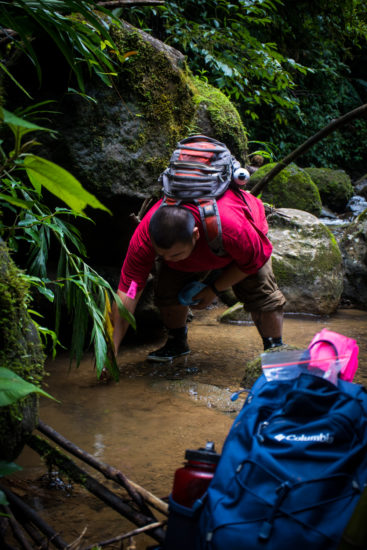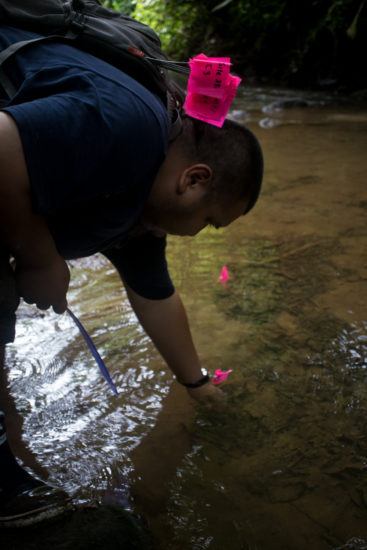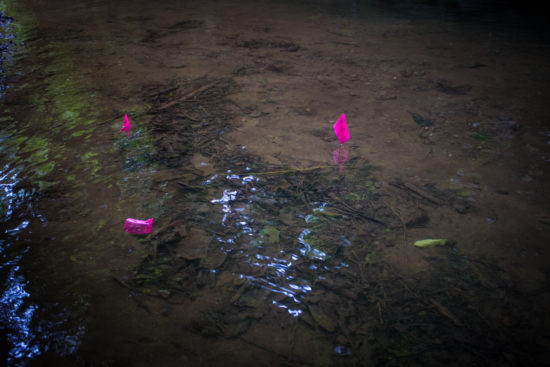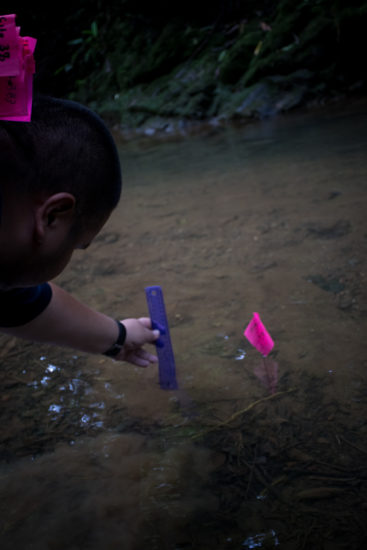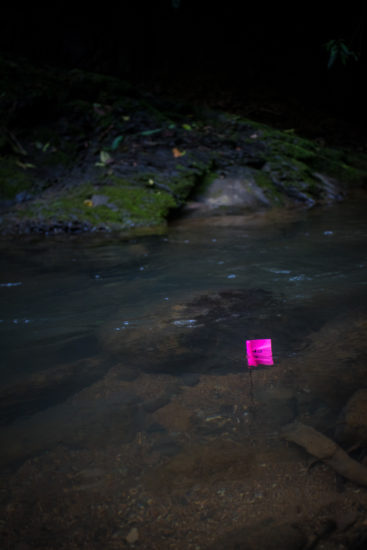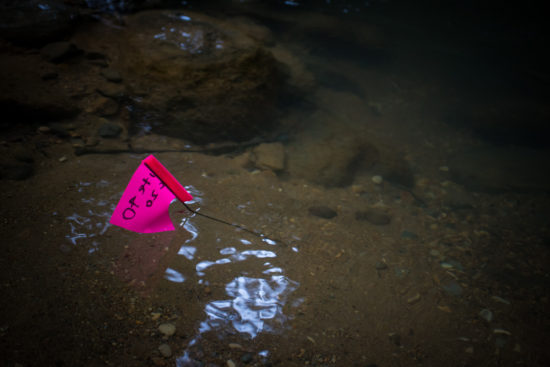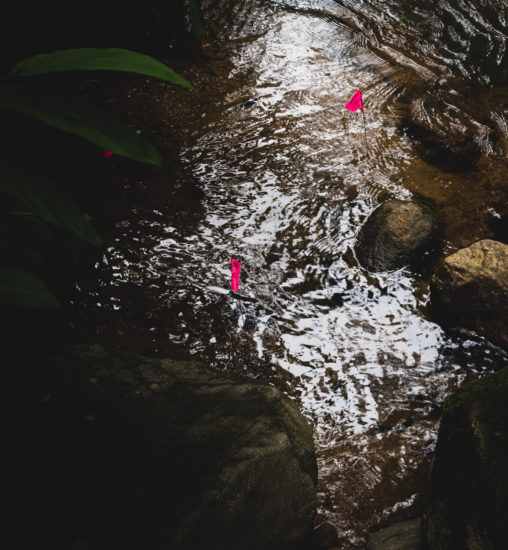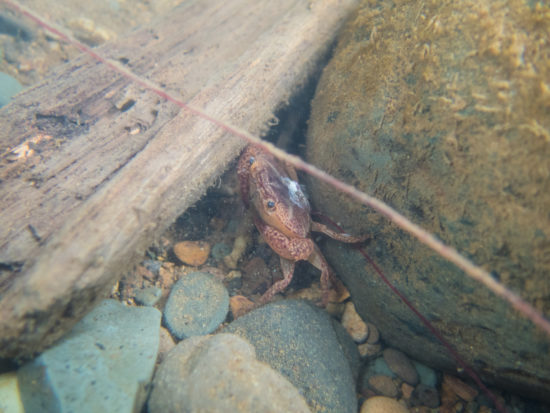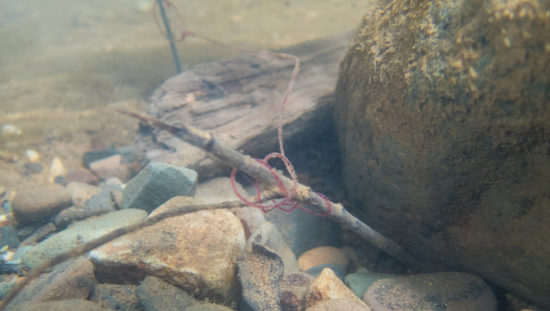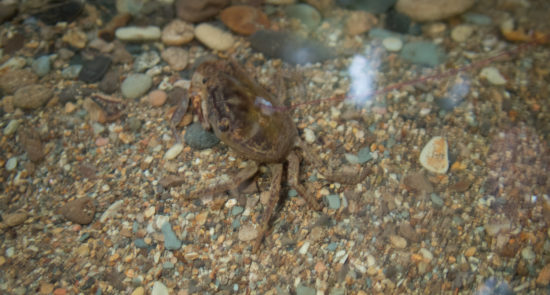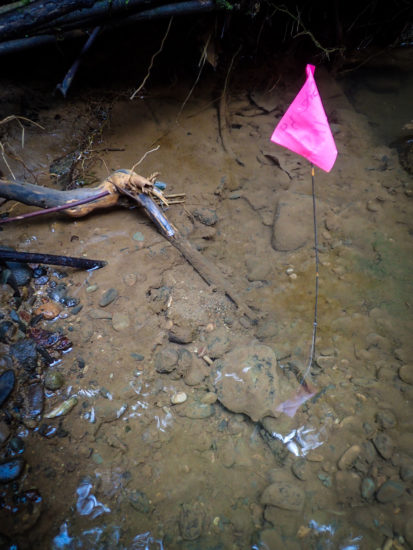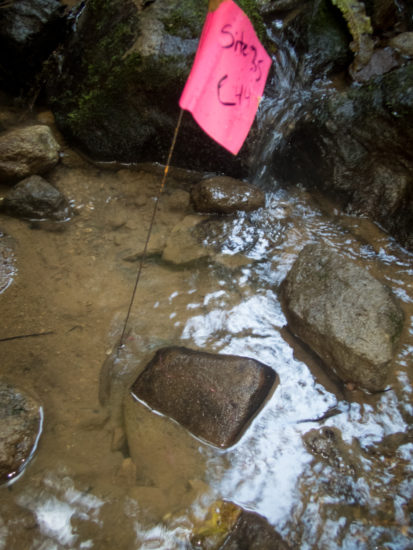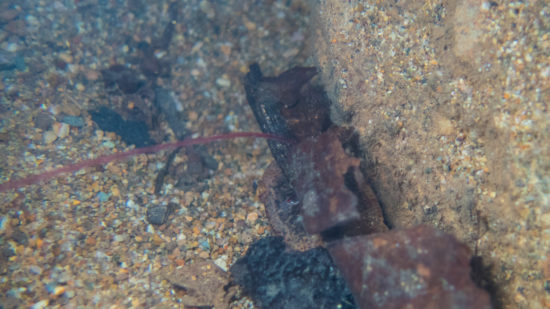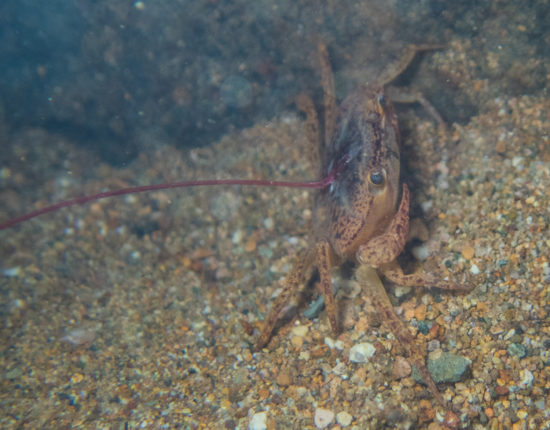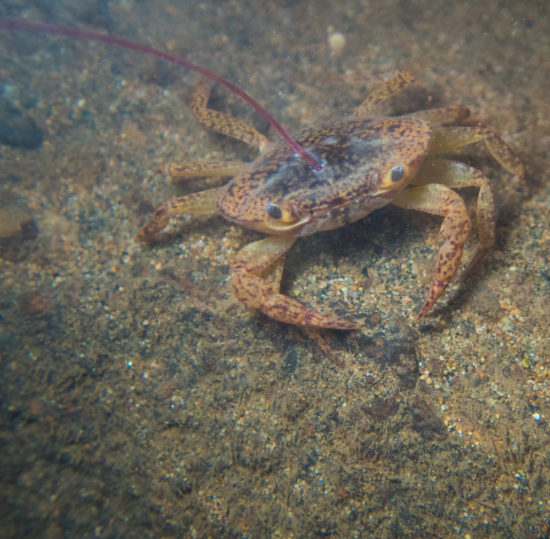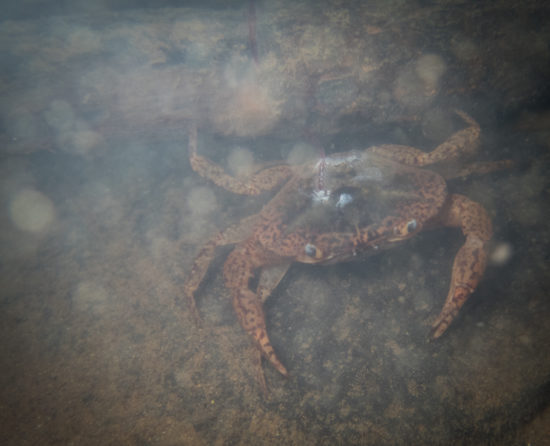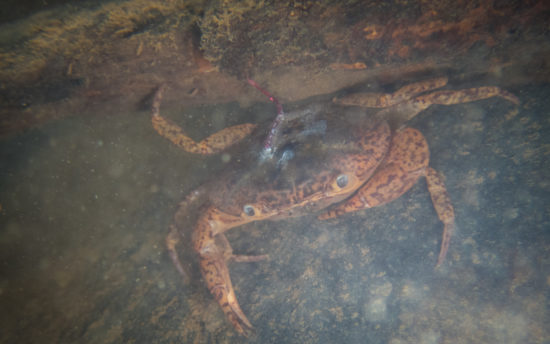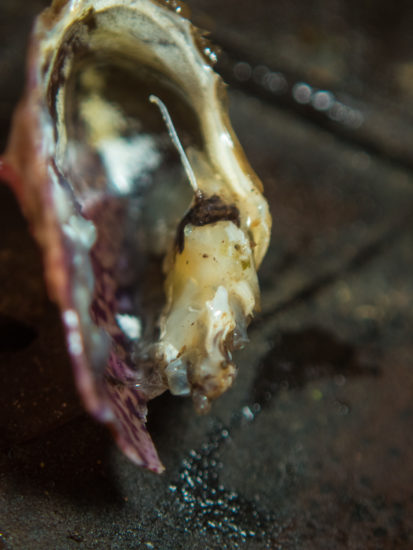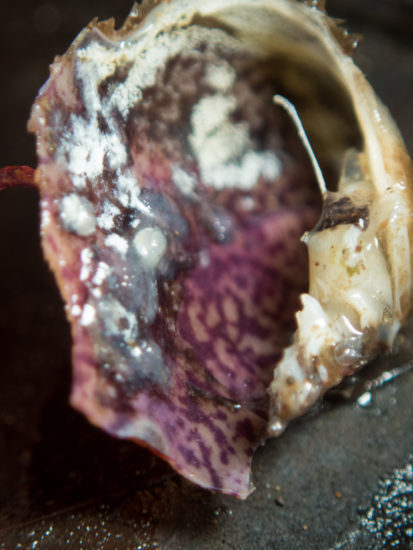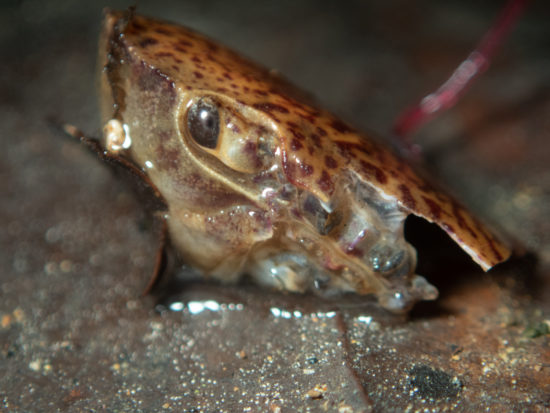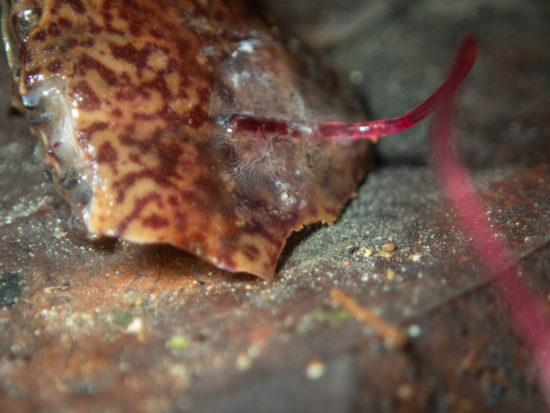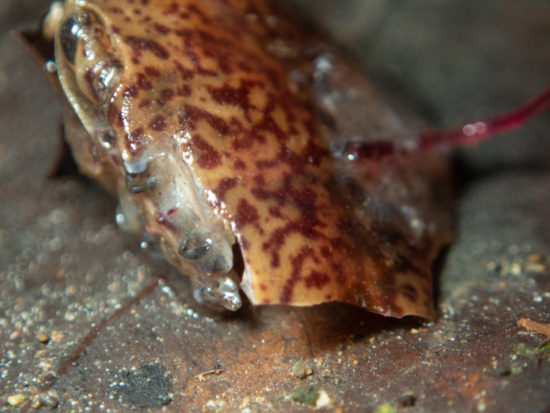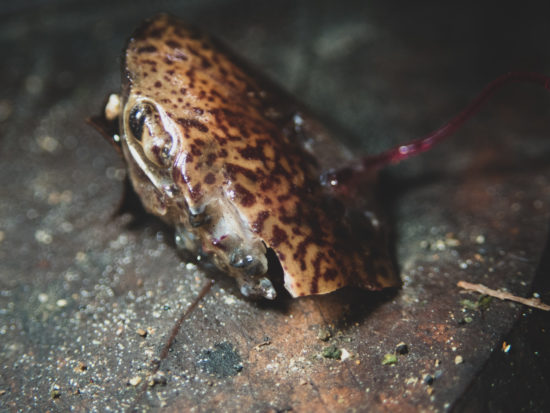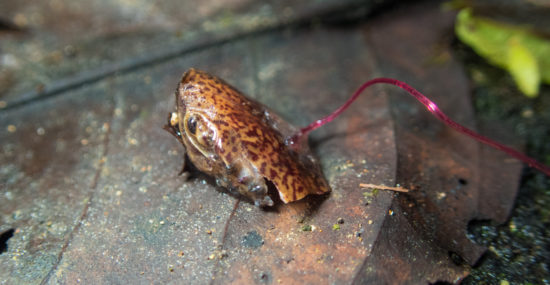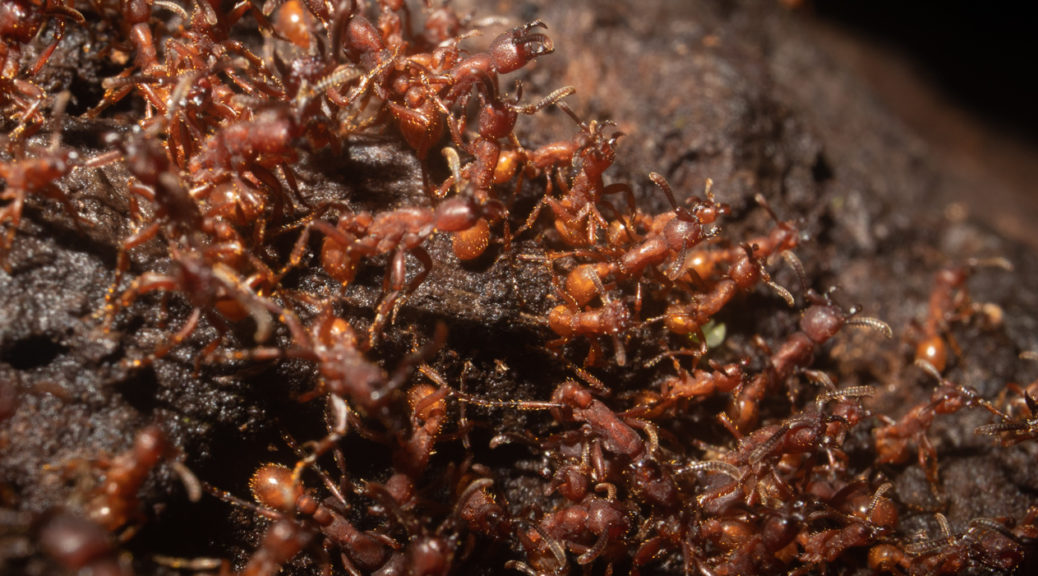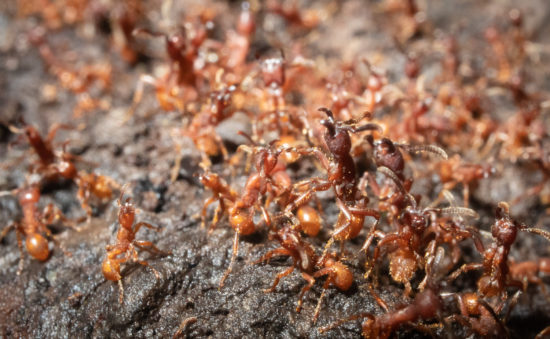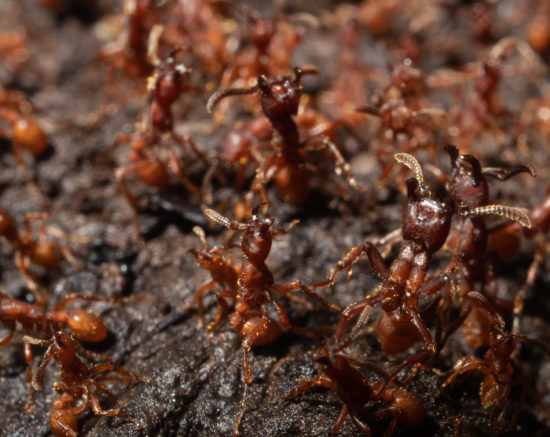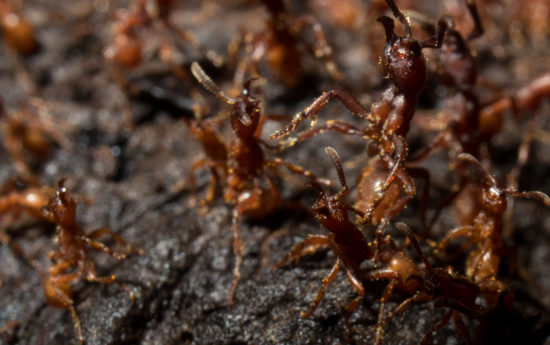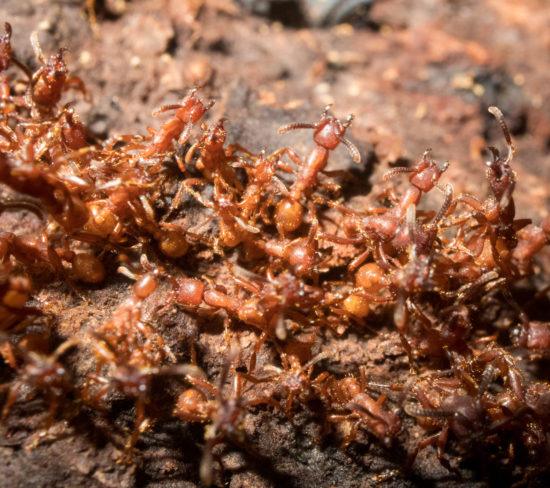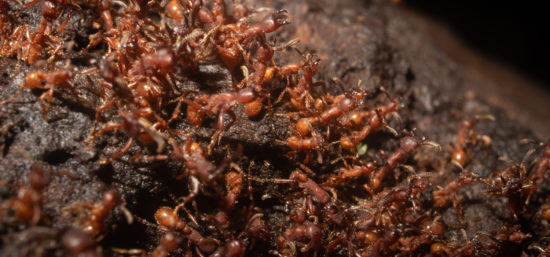Butterfly at Finca Cantaros.
Tag Archives: Las Cruces
Pool in Rio Java
Variable seedeater nestlings
Terciopelo
Molting crab
Allacanthos pittieri juvenile.
Yellow-throated Toucans
Along the Gamboa Trail in Las Cruces, we came across some yellow-throated toucans (Ramphastos ambiguus) displaying some peculiar behavior. One was hanging by its beak from another and a third was adjacent and calling. We watched with concern and took a video.
Eventually, the hanging individual was released with a loud snap—presumably the other bird’s beak snapping shut—and flew to a tree nearby, but was quickly pursued by the other two birds.
We assumed this was aggressive behavior, but, on the way back via taxi, the driver (who has lived in the area for his entire life… he even grew up in the garden at Las Cruces as his family worked there) suggested this was courtship—the female was hanging while the male held her. I couldn’t confirm this behavior anywhere (perhaps with a library) but beak knocking occurs during courting.

A start to Zane’s Crab predation experiment
As I previously mentioned, one of my students this summer, Zane, was interested in the two freshwater crabs that occur here, Allacanthos pittieri and Ptychophallus paraxanthusi, and how they may partition habitats. We find both species throughout the watershed, but it seems that the larger, P. paraxanthusi occurs in higher abundance in larger streams (i.e., the Rio Java proper), whereas A. pittieri occurs more abundantly in the smaller tributaries. This observation is a bit confounded by the lack of success we’ve had in doing mark-recapture studies (or, more generally, accurately estimating population densities). In any case, there may be some partitioning, and it could be due to a variety of factors… including predation.
While Zane started out interested in measuring crab predation risk within, at the bank, and outside of the streams to assess whether crabs may evaluate predation risk and use different parts of the stream or forest to reduce their risk (we’ve observed several individuals in the forest and on the trails!), we collected about 45 individuals—divided about equally between species. Thus, we modified the original plan: Zane would assess predation risk by species and by stream order (i.e., small, second-order streams, and a larger, third-order stream).
Crabs were tethered to monofilament line in the lab, numbered, and transported to the stream.
Some individuals had to be tethered in the field—super glue was used to tether them.
Zane and Ahmi stake the crabs into the streams with labeled flags. Crab species were pair in tethering sites.
Some habitat variables were measured, including substrate and depth of the tethering sites.
Crabs remained tethered for about nine days and were observed once a day.
And some results immediately surfaced: some crabs likely escaped by chewing the line, other lines were cleanly cut, and some damaged carapaces remained.
In other cases, parts of a missing crab were found near the tethering sites!
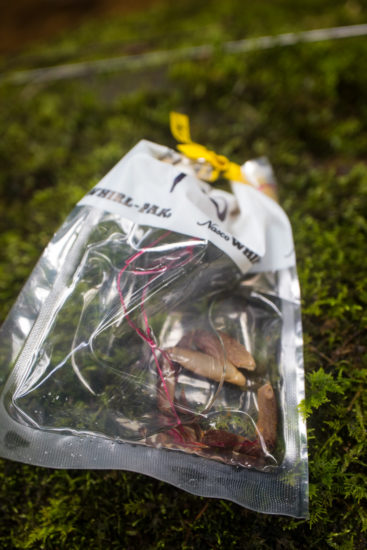
Army ants
Several species of army ants, Ecitoninae, are common in Las Cruces, and there is a convenient picture guide here: http://ants.biology.utah.edu/genusguide/genusguide.html
I think these smaller one are Neivamyrmex—it’s not possible to see their tarsi, which is a critical characteristic in determining genus, but they are certainly smaller and less conspicuous than others I’ve seen. These were moving along a log over Quebrada Culvert.
I’ve observed other Eciton in La Selva and Palo Verde, and these could also be Eciton from the Wilson Botanical Garden.
Another morning commute
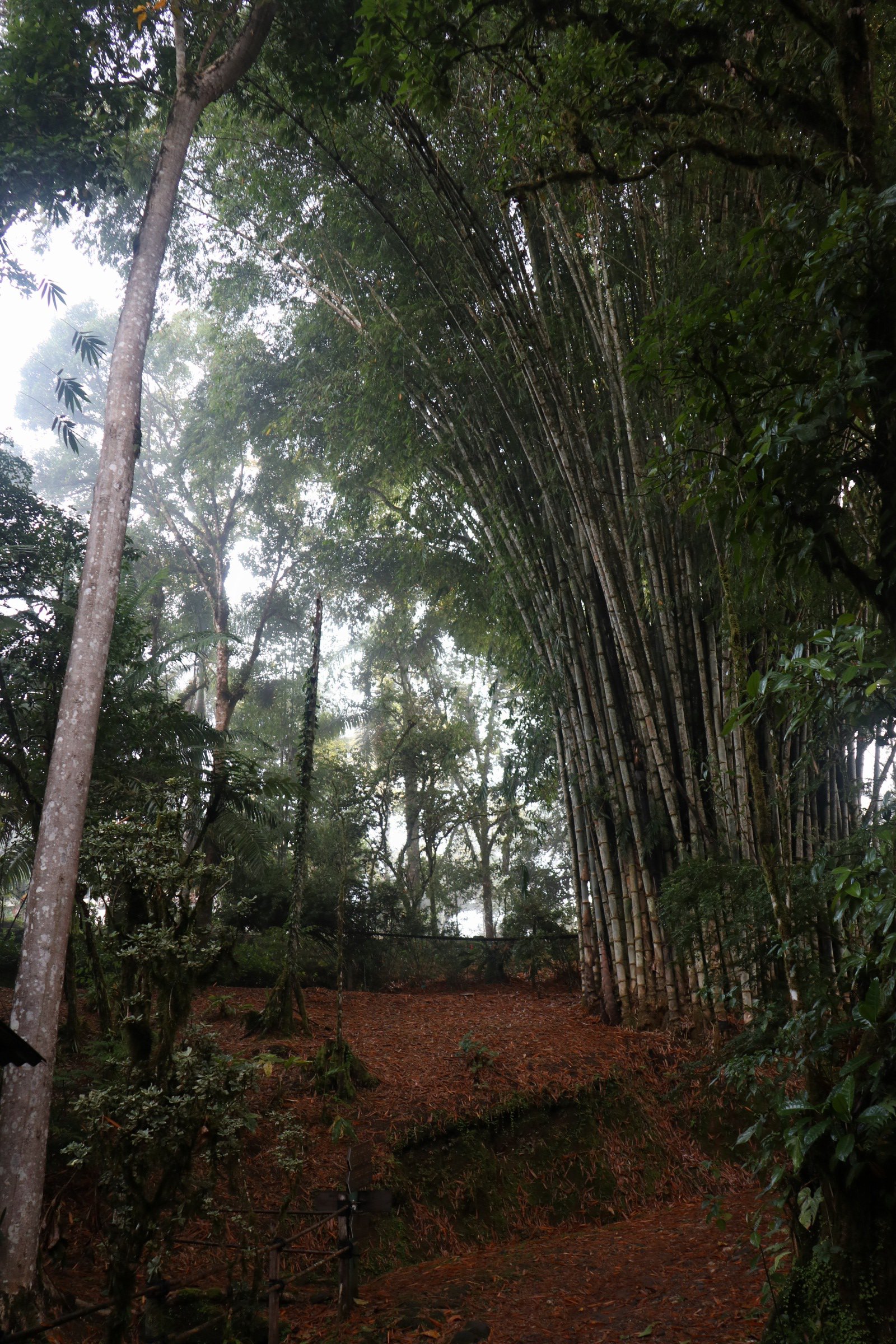
Pink forest
